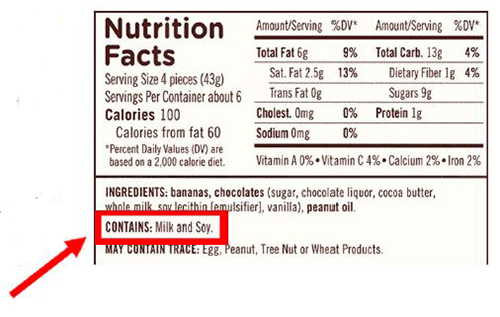Patient EducationJan | 11 | 2021
Lactose-Free v. Dairy-Free: How to Tell the Difference
What are the differences between lactose intolerance, milk/dairy allergy and milk/dairy intolerance?
Lactose intolerant
Lactose is a type of sugar found in milk and milk products, such as cheese, yogurt, ice cream and butter. Our bodies produce an enzyme called lactase, which helps us digest lactose properly. In some people, over time, the body stops producing enough lactase. This is normal. As a result, they can no longer digest lactose properly. This causes uncomfortable gastrointestinal (stomach and intestine) symptoms, including gas, bloating, cramps, diarrhea and nausea.
Milk/dairy allergy
A milk/dairy allergy is the most common food allergy in infants and young children. A person with a milk allergy is often allergic to one of two proteins found in milk. The two proteins are called casein and whey. In people who have a milk/dairy allergy, the immune system overreacts to these specific proteins. This can cause serious symptoms like wheezing (a whistling sound when breathing in) and trouble breathing. People with a milk/dairy allergy should not consume any foods that contain milk/dairy.
Milk/dairy intolerant
It is also possible to have gastrointestinal symptoms (like reflux and constipation) after consuming milk products and not be classified as lactose intolerant. Choosing lactose-free options made from milk eliminates lactose but not milk proteins. Choosing plant-based or vegan “milk” and yogurt eliminates lactose and the two milk proteins casein and whey.
Do lactose-free or vegan products contain dairy?
| Product | Lactose-Free | Dairy-Free |
|
Yes | No |
|
Yes | Yes |
*Vegan cheeses are free of any animal-sourced ingredients, making them dairy, egg and meat-free.
Did you know…?
Eggs are still a part of a dairy-free diet. Even though they are found in the dairy section of the grocery store, eggs do not contain milk sugar and milk proteins. Eggs are safe to eat in a milk-free diet.
How to find dairy-free foods in the grocery store

How do I know if a food has milk or dairy in it?
The nutrition facts label will say one of the two following phrases:
- Contains milk
- The word milk will be in parenthesis next to an ingredient that comes from or is made from milk. For example, an ingredient list may say cream (milk).
The following ingredients can also mean that a product contains milk:
- Butter, butter fat, butter milk
- Cream cheese
- Cheese (variety of types)
- Ghee (Butter that has the milk solids, or casein and whey, removed. Ghee does not contain lactose, but it does contain dairy.)
- Half-and-half
What are some dairy-free substitutes for foods that contain dairy?
When picking out a dairy-free (also called non-dairy) substitute while grocery shopping, look for ones that say fortified or enriched.
Below is a list of dairy-free substitutes for many popular dairy foods:
- Milk: almond, coconut, hemp, soy, rice, flaxseed, pea, oat (For example, brands with limited ingredients are Pacific Foods® and MALK Organics®)
- Yogurt: coconut, rice, almond, soy, oat
- Cheese: pea (Daiya®) or coconut (Good Planet®)
- Ice cream: almond-based, coconut-based, soy-based or oat-based (for example: SILK®, So Delicious® or Oatly®)
- Butter: Earth Balance® spread or Forager Project®
- Cream cheese: Tofutti® (soy-based), Kite Hill® (nut-based)
- Chocolate: Enjoy Life® (milk-free, nut-free)
A note about oat milk…
Some brands of oat milk are not certified gluten free. If you have celiac disease, ask your doctor before using oat milk.
What are some dairy-free snack ideas?
Below are some dairy-free snack ideas that you could try in your home!
- Raw veggies with hummus (carrots, celery, cucumbers)
- Apple or banana slices with nut butter (peanut, almond, cashew, mixed nut)
- Smoothies made with an alternative milk
- Trail mix with dried fruit, as a chocolate alternative
- Butter-free popcorn (Try with a drizzle of olive oil, garlic, nutritional yeast or chipotle chili powder!)
Rev. 6/2021. Mass General for Children and Massachusetts General Hospital do not endorse any of the brands listed on this handout. This handout is intended to provide health information so that you can be better informed. It is not a substitute for medical advice and should not be used to treatment of any medical conditions.
Appointments and Referrals
Request an appointment or second opinion, refer a patient, find a doctor or view test results with MGfC's secure online services.

